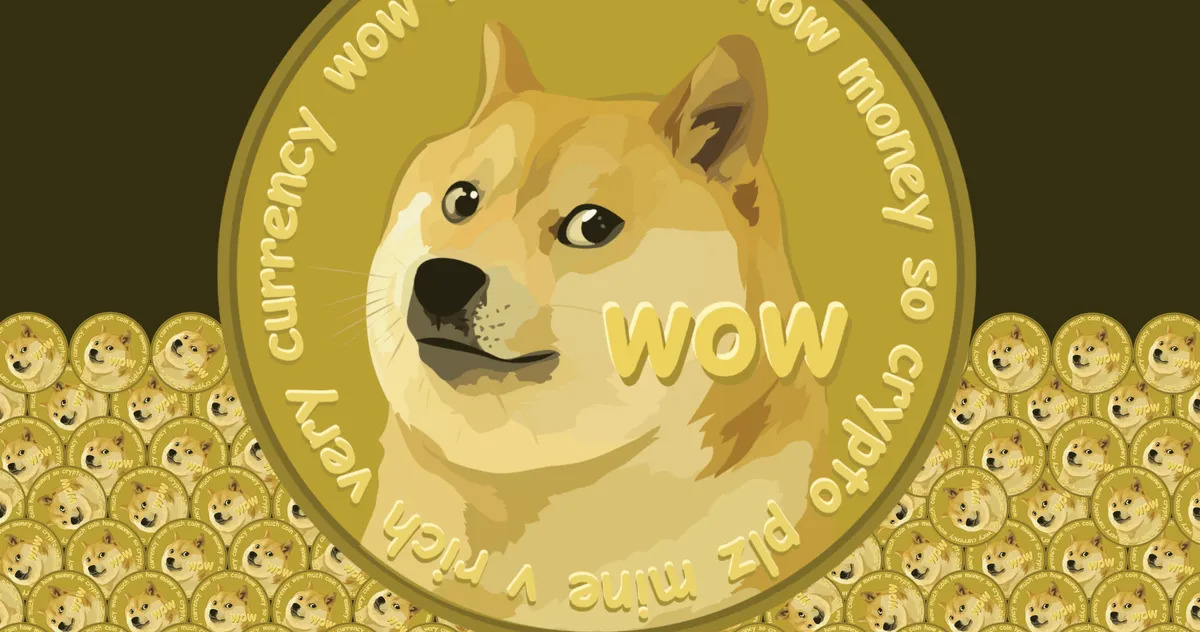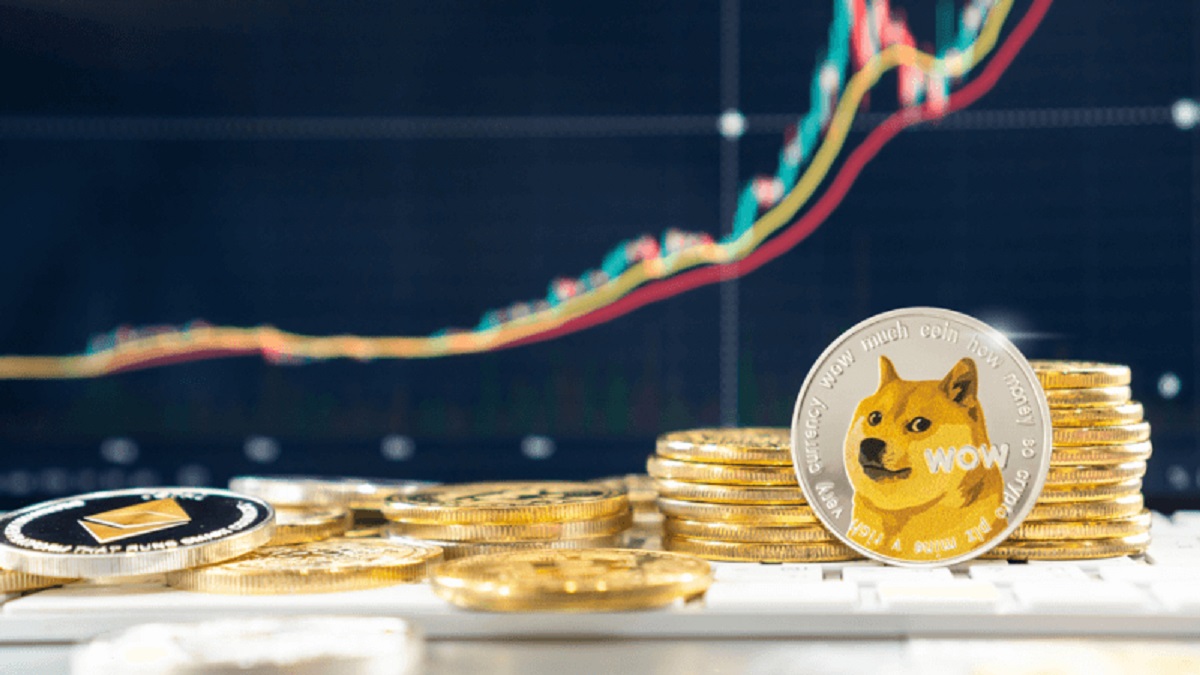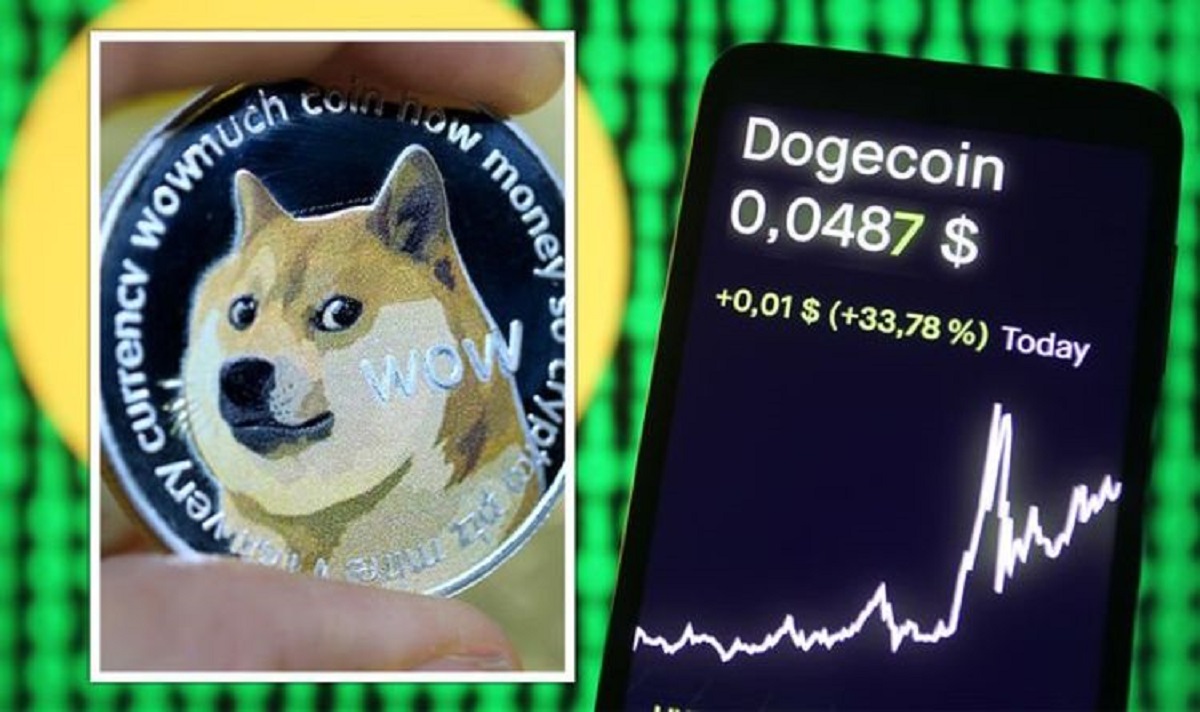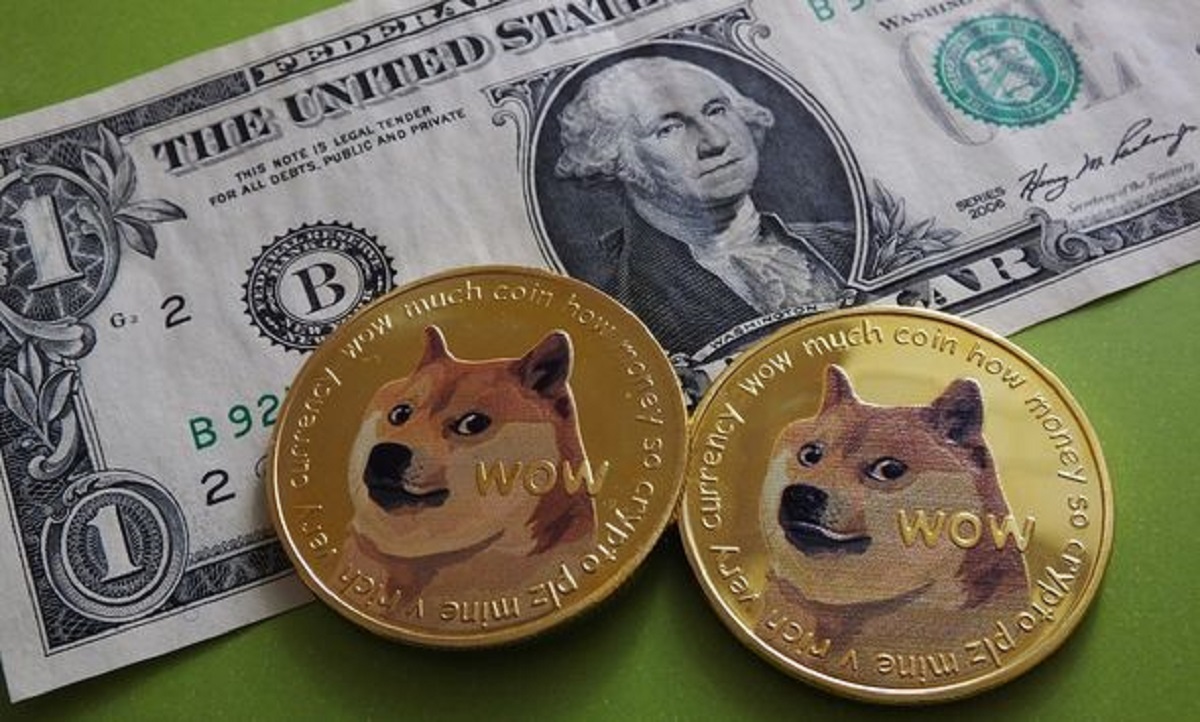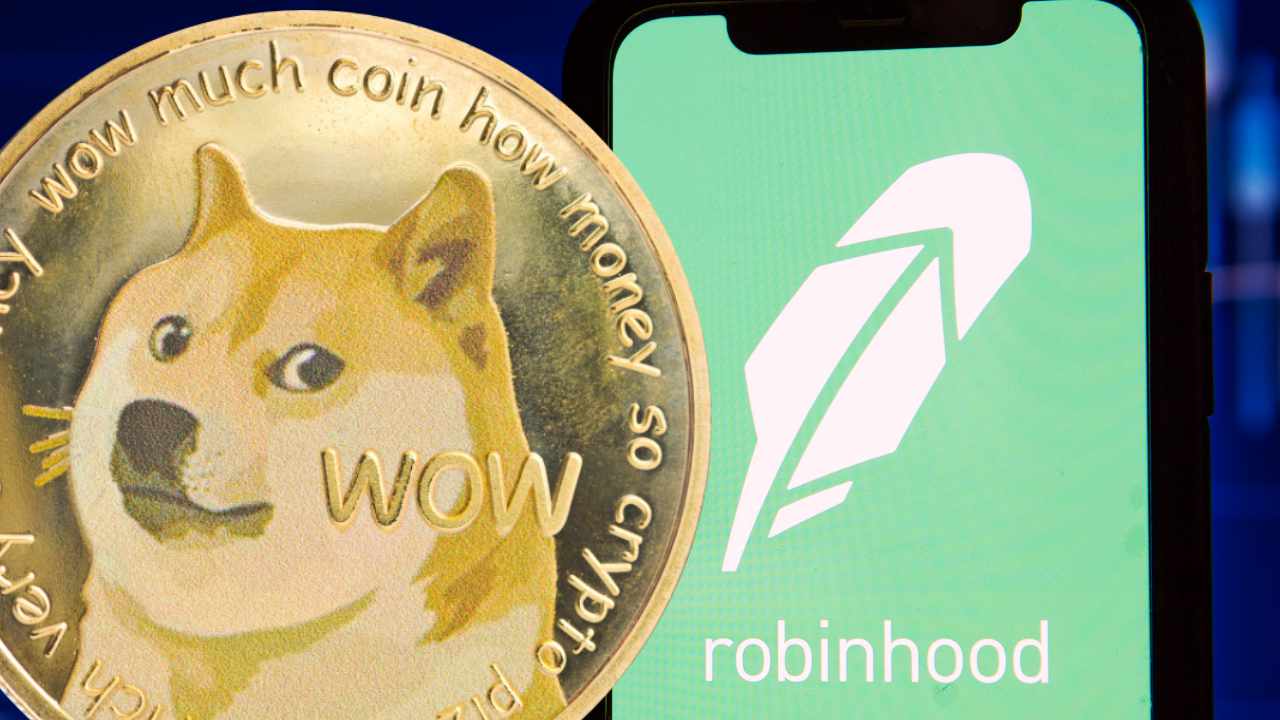Introduction
Dogecoin, a cryptocurrency that started as a joke, has been gaining significant attention and popularity in recent times. Created in 2013 by software engineer Billy Markus and Jackson Palmer, Dogecoin is based on the popular “Doge” meme featuring a Shiba Inu dog. Initially intended as a lighthearted digital currency, it quickly captured the interest of internet users, and its value began to rise.
As cryptocurrency continues to dominate the financial landscape, investors are increasingly curious about the potential value of Dogecoin. While Bitcoin and Ethereum have traditionally dominated the market, Dogecoin has emerged as a strong contender, fostering a dedicated community of supporters and investors.
But just how much could Dogecoin be worth? To answer this question, we need to consider several factors that impact its value. The cryptocurrency market is notoriously volatile, with prices subject to rapid fluctuations based on various influencers.
This article will delve into the factors that affect Dogecoin’s value, provide a brief history of its price movements, explore predictions for its future worth, analyze expert opinions, compare it with other cryptocurrencies, and address the risks and challenges it faces.
It is important to note that this article does not provide financial advice. The purpose is to present an overview of the factors influencing Dogecoin’s value and provide insights into its potential worth based on available information.
What is Dogecoin?
Dogecoin is a decentralized digital currency, commonly referred to as a cryptocurrency. It operates on a peer-to-peer network, utilizing blockchain technology to secure transactions and maintain the integrity of the system. Dogecoin was created as a fun and light-hearted alternative to traditional cryptocurrencies, aiming to engage and entertain its users.
One of the defining features of Dogecoin is its mascot, the Shiba Inu dog from the popular “Doge” meme. This quirky and adorable dog quickly became the face of the cryptocurrency, contributing to its widespread recognition and appeal.
Unlike Bitcoin’s limited supply, Dogecoin has no maximum cap. This means that an infinite amount of Dogecoins can be mined and circulated. However, there is an annual inflation rate of 5.256 billion coins, intended to counterbalance the lack of scarcity and provide a steady supply for transactions and rewards.
The transaction speed of Dogecoin is also a notable advantage. With its block time of just one minute, Dogecoin transactions are commonly faster compared to Bitcoin’s block time of 10 minutes. This quick confirmation time allows for more efficient and seamless transactions.
Moreover, Dogecoin has gained popularity due to its strong community support and active engagement in charitable endeavors. The Dogecoin community, known as the “Doge Army,” has been involved in various charitable initiatives, raising funds for projects such as sponsoring sports teams and contributing to disaster relief efforts.
Despite its humble beginnings, Dogecoin has attracted attention from individuals and even businesses. It can be used for online purchases, donations, and tipping content creators, further expanding its utility and appeal in the digital world.
Factors That Affect Dogecoin’s Value
The value of Dogecoin, like any other cryptocurrency, is influenced by a variety of factors. Understanding these factors can help investors and enthusiasts make more informed decisions about the potential future worth of Dogecoin. Here are some key factors that affect Dogecoin’s value:
- Market Demand: The level of demand from buyers and sellers significantly impacts Dogecoin’s value. If there is high demand for Dogecoin, the price is likely to increase. Conversely, if demand diminishes, the value may drop.
- Cryptocurrency Market Trends: The overall trends and sentiment within the larger cryptocurrency market can also impact Dogecoin’s value. If the market experiences a bullish trend, with rising prices and increased investment in cryptocurrencies, it may positively affect Dogecoin’s value.
- Technology Development: Technological advancements and developments related to Dogecoin can influence its value. Upgrades to the underlying blockchain technology, improvements in transaction speed or security, and innovative features can attract more users and investors, potentially leading to a higher value.
- Media and Public Sentiment: Media coverage and public sentiment play a crucial role in shaping the perception of Dogecoin. Positive news, endorsements from influential figures, or mentions in popular media outlets can generate hype and increased interest, contributing to an uptick in value. On the other hand, negative press or unfavorable public sentiment can have the opposite effect.
- Government Regulations: The regulatory environment surrounding cryptocurrencies, including Dogecoin, can impact its value. Positive regulatory developments that recognize and support cryptocurrencies can boost their value. Conversely, stricter regulations or outright bans on cryptocurrencies can have a significant negative impact.
It is important to note that these factors are not exhaustive, and the cryptocurrency market is highly volatile and unpredictable. Additionally, the value of Dogecoin can be influenced by speculative trading, whale manipulation, and market anomalies.
As a result, it is crucial for investors and enthusiasts to conduct thorough research, analyze market trends, and stay updated with the latest news and developments related to Dogecoin to make informed decisions about its potential value.
A Brief History of Dogecoin’s Price
The price of Dogecoin has experienced significant volatility since its inception in 2013. Initially, it was primarily used for tipping and small transactions within online communities. As interest in Dogecoin grew, its value began to increase, attracting more attention from the broader cryptocurrency market.
In its early days, the price of Dogecoin remained relatively stable, hovering at a fraction of a cent. However, in December 2013, a significant surge in popularity led to a sharp increase in value. Dogecoin’s market cap soared from a few thousand dollars to millions within weeks.
The tipping point came with the “Doge4Water” campaign in early 2014 when the Dogecoin community raised a substantial amount of money to fund the construction of clean water wells in Kenya. This event drew widespread media attention and brought Dogecoin into the spotlight, driving its value even higher.
Throughout 2014 and 2015, Dogecoin’s price gradually declined along with the broader cryptocurrency market. However, it managed to maintain a dedicated community, and various initiatives and events sustained its popularity.
In 2021, Dogecoin experienced a remarkable resurgence. Influenced by social media campaigns and endorsements from high-profile individuals like Elon Musk, the price of Dogecoin skyrocketed. At its peak in May 2021, Dogecoin reached an all-time high of around $0.70, a staggering increase from its early days.
However, it’s important to note that the meteoric rise in Dogecoin’s price was followed by a significant correction. As with other cryptocurrencies, Dogecoin experienced a sharp decline in value, highlighting the volatility and unpredictability of the market.
The history of Dogecoin’s price demonstrates the influence of community engagement, media attention, and the broader cryptocurrency market on its value. While it has experienced both dramatic increases and sharp drops, its enduring popularity and strong community support have solidified its position as an important player in the cryptocurrency landscape.
Predictions for Dogecoin’s Future Value
Predicting the future value of cryptocurrencies is a challenging task due to their highly volatile nature and dependence on various external factors. Dogecoin, in particular, has seen significant fluctuations in its value throughout its history. While it is impossible to provide an accurate prediction, here are some perspectives and forecasts for Dogecoin’s future value:
Optimistic Predictions:
- Some cryptocurrency enthusiasts and supporters believe that Dogecoin has the potential to reach new heights. They argue that its strong community, active social media presence, and ongoing developments could propel the value upward.
- With increasing mainstream acceptance and adoption of cryptocurrencies, Dogecoin could benefit from the broader market trend, potentially leading to a surge in value.
- If Dogecoin continues to attract influential endorsements and partnerships, it could further fuel positive sentiment and potentially contribute to an increase in value.
Skeptical Views:
- Many skeptics of Dogecoin believe that its current popularity is driven primarily by speculative trading and market hype, which may not be sustainable in the long term.
- While Dogecoin has a dedicated community, critics argue that its lack of distinct features or technological advancements compared to other cryptocurrencies may limit its potential for long-term growth.
- The volatility of the cryptocurrency market overall makes it difficult to predict the specific trajectory of any individual cryptocurrency, including Dogecoin.
Ultimately, the future value of Dogecoin will depend on a multitude of factors, including market demand, technological developments, regulatory changes, and investor sentiment. It is crucial to approach predictions with caution and conduct thorough research before making investment decisions.
Expert Opinions on Dogecoin’s Potential Worth
The potential worth of Dogecoin is a subject of much debate and speculation among experts in the cryptocurrency industry. While some experts see potential in Dogecoin, others express caution and skepticism. Here are some expert opinions regarding Dogecoin’s future value:
Optimistic Viewpoints:
- Elon Musk, the CEO of Tesla and SpaceX, has been a vocal supporter of Dogecoin. His tweets and public statements have had a significant impact on Dogecoin’s price. Musk has expressed optimism about Dogecoin’s potential, stating that it has the potential to become the “currency of the internet.”
- Some experts believe that Dogecoin’s strong community engagement and social media presence could contribute to its long-term value. The passionate community behind Dogecoin has been proactive in raising awareness and supporting charitable causes, which could help solidify its position in the market.
- As cryptocurrencies gain wider mainstream acceptance, some experts argue that Dogecoin, with its recognizable brand and lighthearted image, could appeal to a broader audience and potentially increase in value.
Skeptical Perspectives:
- Many financial experts caution against investing in Dogecoin, citing its lack of fundamental value compared to other cryptocurrencies. Dogecoin was created as a meme and lacks the same technological advancements and unique features found in cryptocurrencies such as Bitcoin or Ethereum.
- Concerns over market manipulation and speculative trading also contribute to skepticism about Dogecoin’s potential worth. The rapid price fluctuations and reliance on social media sentiment raise concerns about its long-term stability.
- Regulatory uncertainties surrounding cryptocurrencies, including Dogecoin, present potential hurdles for its future value. Increased regulations or bans could significantly impact its worth.
It is essential to approach expert opinions with caution and conduct thorough research before making any investment decisions. The cryptocurrency market is highly volatile, and predicting the future value of any cryptocurrency, including Dogecoin, is challenging.
Dogecoin vs. Other Cryptocurrencies: A Comparison
When evaluating the potential worth of Dogecoin, it can be helpful to compare it to other cryptocurrencies in the market. Here’s a comparison between Dogecoin and some major cryptocurrencies:
Bitcoin (BTC):
Bitcoin, the first and most well-known cryptocurrency, holds a dominant position in the market. Bitcoin’s limited supply and widespread adoption have contributed to its value, making it a sought-after store of value and a medium of exchange. However, its high transaction fees and slower confirmation times compared to Dogecoin may limit its utility in everyday transactions.
Ethereum (ETH):
Ethereum is a decentralized platform that enables smart contracts and the development of decentralized applications (dApps). Its native cryptocurrency, ETH, supports the Ethereum ecosystem. While Ethereum has gained popularity and utility, its scalability challenges and transaction fees have raised concerns. Dogecoin, on the other hand, boasts faster transaction speeds and lower fees.
Litecoin (LTC):
Litecoin, often referred to as “silver” to Bitcoin’s “gold,” was one of the early cryptocurrencies. Like Dogecoin, Litecoin employs a proof-of-work algorithm but has implemented certain technical improvements, including faster block generation times. While Litecoin provides faster transaction confirmations, Dogecoin’s community engagement and appeal have given it a unique position in the crypto space.
Ripple (XRP):
Ripple is a digital payment protocol designed for fast, low-cost international money transfers. It aims to streamline cross-border transactions and facilitate interbank transfers. Ripple’s focus on financial institutions sets it apart from Dogecoin, which targets the broader cryptocurrency community and emphasizes the use of crypto in online transactions and tipping.
Each cryptocurrency mentioned above has its own strengths, weaknesses, and market positions. While Dogecoin may not have the same level of mainstream recognition as Bitcoin or Ethereum, its strong community engagement and social media presence contribute to its unique appeal.
It is important to consider factors such as transaction speed, scalability, adoption rate, and unique value propositions when comparing cryptocurrencies. Evaluating these factors can help investors assess the potential worth and long-term viability of different cryptocurrencies, including Dogecoin.
Risks and Challenges for Dogecoin’s Value
While Dogecoin has gained popularity and captured the attention of the cryptocurrency community, it faces several risks and challenges that can potentially impact its value. It is crucial for investors and enthusiasts to be aware of these factors. Here are some of the risks and challenges for Dogecoin’s value:
Market Volatility:
As with any cryptocurrency, Dogecoin is subject to extreme price volatility. Its value can fluctuate rapidly due to market sentiment, media attention, or regulatory announcements. Sudden price drops can result in substantial losses for investors, highlighting the inherent risks and volatility of the cryptocurrency market.
Lack of Fundamental Value:
While Dogecoin has gained a dedicated following, some skeptics argue that it lacks fundamental value compared to other cryptocurrencies. Unlike Bitcoin, which has a limited supply, or Ethereum, which offers smart contract capabilities, Dogecoin’s use case primarily revolves around social tipping and online transactions. This lack of inherent utility may limit its long-term growth potential.
Whale Manipulation:
Whale manipulation, where large holders (whales) of Dogecoin can impact its price by buying or selling significant amounts, is a concern. Sudden large transactions by whales can create artificial spikes or crashes in Dogecoin’s value. This manipulation can erode trust and stability in the market, potentially deterring investors from holding or transacting with Dogecoin.
Regulatory Uncertainties:
The regulatory landscape surrounding cryptocurrencies is evolving and often unclear. Heightened regulatory scrutiny or unfavorable regulations imposed by governments and regulatory bodies can pose a significant challenge to Dogecoin’s value. Regulatory actions such as bans or restrictions can limit its use and adoption, impacting demand and market dynamics.
Competitive Landscape:
Competition from other cryptocurrencies, with innovative features, stronger use cases, or greater mainstream acceptance, poses a challenge for Dogecoin. As the cryptocurrency market evolves, new and more advanced cryptocurrencies enter the scene, potentially diverting investor attention and capital away from Dogecoin.
It is important to consider these risks and challenges when assessing the potential future value of Dogecoin. While Dogecoin’s enthusiastic community and social media presence have contributed to its popularity, addressing these challenges is crucial to its continued success and long-term value. Investors should carefully evaluate these factors and exercise caution when making decisions related to Dogecoin.
Conclusion
Dogecoin, a cryptocurrency that started as a lighthearted joke, has gained significant attention and popularity. With its unique branding, active community, and widespread recognition, Dogecoin has carved out a distinct position in the cryptocurrency market.
While it is difficult to accurately predict Dogecoin’s future value, there are several key factors to consider. Market demand, technological advancements, media sentiment, government regulations, and competitive dynamics all play a role in shaping Dogecoin’s worth.
Experts have varying opinions on Dogecoin’s potential worth. Optimistic viewpoints highlight its engaging community, influential endorsements, and potential for broader market adoption. However, skeptics raise concerns about its lack of fundamental value compared to other cryptocurrencies, market volatility, and regulatory uncertainties.
When comparing Dogecoin to other cryptocurrencies, it is essential to consider factors such as transaction speed, scalability, adoption rate, and unique value propositions. Each cryptocurrency has its strengths, weaknesses, and market positions.
Despite its challenges, Dogecoin continues to attract attention and maintain its relevance. Its strong community engagement, social media presence, and active participation in charitable initiatives contribute to its appeal.
Investors and enthusiasts should approach the potential future value of Dogecoin with caution, conducting thorough research and staying informed about market trends and developments. The cryptocurrency market is highly volatile and subject to external influences, making it crucial to assess risks and challenges.
In conclusion, Dogecoin’s future value is uncertain, and it is important to approach investments in cryptocurrencies with careful consideration. While Dogecoin’s unique brand and community have propelled it to its current position, its long-term worth will depend on various factors that shape the broader cryptocurrency market.







